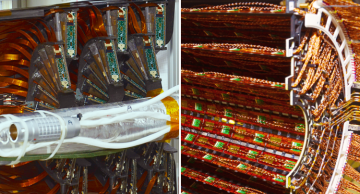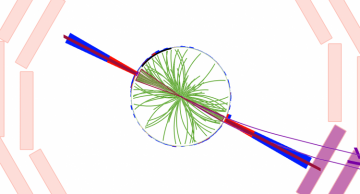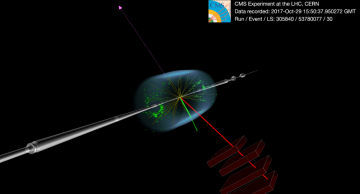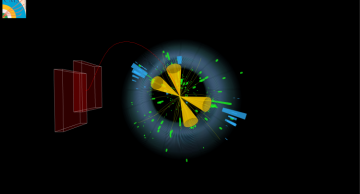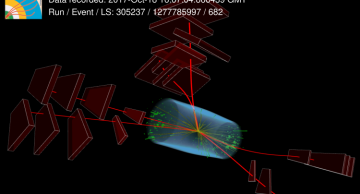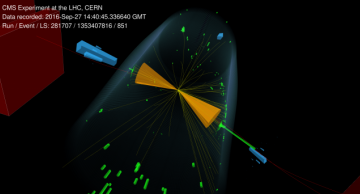After more than two years with lots of delicate work the Pixel Tracker has been successfully installed at the centre of the CMS detector and it is now ready for commissioning.
The Pixel Tracker is the CMS sub-detector closest to the interaction…
News
|
fblekman |
Physics
This year marked the ninth anniversary of the discovery of the Higgs boson; the Standard Model particle linked to the mystery of creating the mass of all the other fundamental particles through the so-called Higgs mechanism. While a single Higgs…
|
fblekman |
Physics
Could you imagine what the dark part of the universe is like?
The Standard Model of Particle Physics explains matter at the subatomic level and the related phenomena such as interactions and forces between the subatomic particles. Still, we…
|
fblekman |
Physics
The interaction of the Higgs boson with its own field leads to its mass generation. Since the Higgs boson mass has already been measured, the study of the Higgs pair production at the LHC reveals directly the strength of the Higgs self coupling λHHH…
|
fblekman |
Physics
High-energy particle accelerators are unique tools to study the structure of matter at the shortest distances. The most powerful accelerator today is the CERN Large Hadron Collider (LHC) that has so far collided beams of protons up to center-of-mass…
|
fblekman |
Physics
For the first time, CMS physicists extract the fundamental parameters of QCD together with constraints on the New Physics.
Any tiny failure of the Standard Model to explain data behaviour is a possible window for the New Physics.…
|
mazumdar |
Physics
The most powerful particle collider in the world, the Large Hadron Collider (LHC), was built in the 27 km tunnel originally excavated for the highest energy electron-positron collider ever built, LEP. As an extraordinarily sensitive machine, LEP was…
|
losmith |
Collaboration
Congratulations to Andrew Gilbert, Marco Luccini and Meng Xiao for winning the CMS Young Researchers Prize for 2021!
The CMS Young Researchers Prize is intended to recognise the outstanding achievements of young members of CMS. It is awarded…
|
losmith |
Collaboration
The awardees of the 2020 CMS Thesis Award are Matteo Defranchis, Cristina Martin Perez and Thorben Quast!
Every year, since 2000, the CMS Thesis Award Committee recognizes and rewards excellence in the CMS PhD student research. Thesis can be written…
|
losmith |
Collaboration
CMS members Phil Harris and Indara Suarez have been awarded with the US Department of Energy (DOE) Early-Career Researcher Grant!
The DOE Early CareerResearch Program is designed to help the scientific workforce by providing support to…
|
fblekman |
Physics
Using the golden decay channel to understand the production of the Higgs boson
The standard model of particle physics is currently the best way to describe interactions of fundamental particles that make up our Universe. It has been tested over many…
|
fblekman |
Physics
What does the decay of a bottom quark look like?
Fragmentation, also known as hadronization, is when particles that contain quarks or gluons create other particles via the strong interaction. The fragmentation process cannot be exactly…

